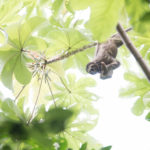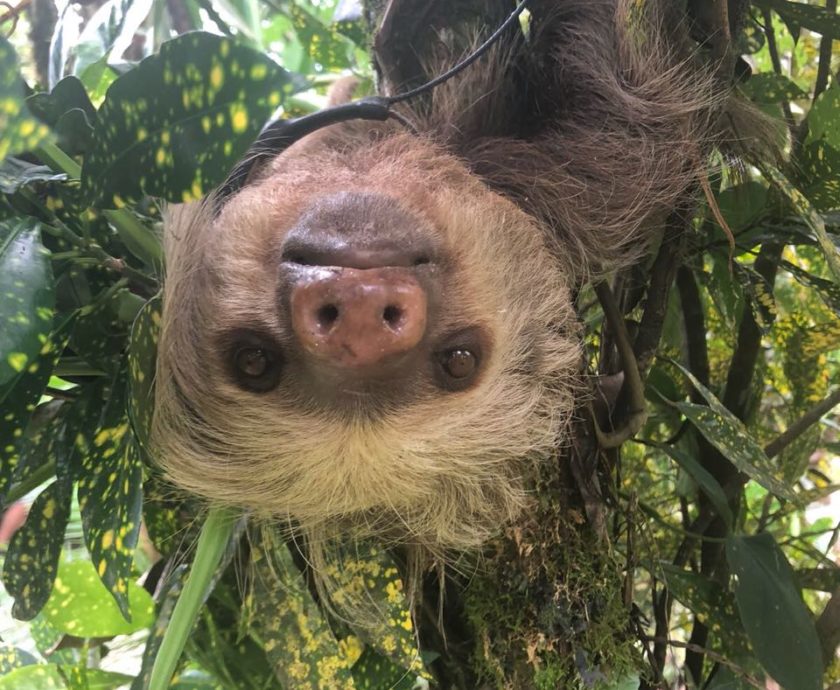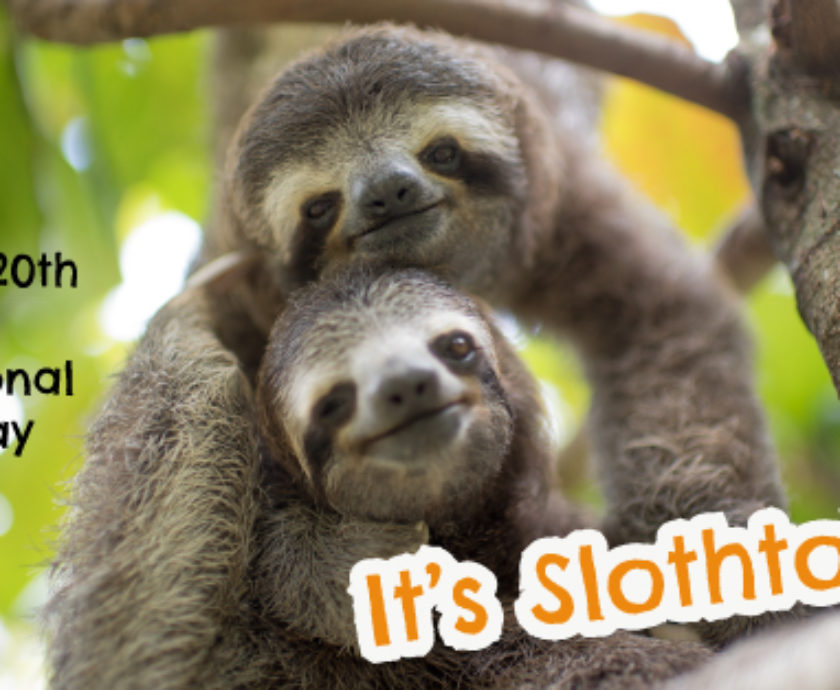CALLING ON ALL YOU AMAZING TEACHERS/ADMINISTRATORS/COUNSELORS!
A fun and interactive way to inspire kindness to animals and the environment

The Sloth Institute (TSI) is excited to announce our celebration of International Sloth month this October with our 2nd annual Elementary School Sloth Challenge. Last year’s campaign was quite special and the teachers who participated expressed that it was a very special experience for the kids.
The Sloth Institute (TSI) is excited to announce our celebration of International Sloth month this October with our 2nd annual Elementary School Sloth Challenge. Last year’s campaign was quite special and the teachers who participated expressed that it was a very special experience for the kids.
Throughout the month of October there were weekly lessons and activities that taught students all about sloths, meanwhile inspiring kindness to animals and the environment.
Lessons included:
Sloth Facts
How to be a Responsible Sloth Tourist
Why it’s Important Not to Support the Pet Trade
We will share some fun ideas for an activity (such as a sloth coloring page which we will provide) and a few other fun things! Students are then encouraged to come up with an anti-pet trade campaign to submit by October 31st. The winning campaign will receive a 15 minute Skype call with the Co-Founder and Sloth Director of TSI, as well as author of Slothlove, Sam Trull, featuring some special appearances by our sloths!
Here is what Ms. Yang, the teacher of last year’s winning class, had to say about the experience:
“Today was such an amazing and educational experience! My students were so happy, they said it was the best day of their lives!”











I am happy to learn that October is International Sloth Month.
Here is a poem I just wrote. Perhaps it could be of use to you.
SLOTH
It seems the sloth is very slow
It’s good he hasn’t far to go
He’ll pick a tree and call it home
Just up and down is all he’ll roam
He’ll hang around, (they don’t move much)
it’s true, they do not keep in touch
Just once a week he will emerge
it’s when he gets the urge to purge
Down he will go to poop and pee
right at the bottom of his tree.
The other time he leaves his bower
is for a bath (he doesn’t shower)
He’ll drop, kerplop, right from a limb,
into a stream, to take a swim
In water he will move with ease
more swiftly than he can in trees
And with peculiar super power
he’ll hold his breath for half an hour!
Back in the tree to rest awhile
And on his face a pleasing smile
Regardless if two-toed or three
The sloth is happy in his tree
Relaxed, sedate and full of charm
His stillness keeps him safe from harm
To predators he doesn’t show
It serves him well to move so slow
He sleeps, he eats, he sleeps some more
way up above the forest floor
Up in a palm, curled in a ball
His curvy claws prevent a fall
He’s quite serene, his eyes are shut
He looks just like a coconut
Suspended, hanging upside down
His head can twist to see the ground
Up in the tree he’ll snooze and scratch
his fur’s a thick and hairy thatch
This thatch can grow a cast of green
that helps him keep from being seen
Along with algae there are moths
that find a home aboard the sloths
The ecosystem in his coat
informs this quirky anecdote
Regardless if three-toed or two
The sloth seems happy, never blue
Nobody’d say he’s ADD
or type A personality
His disposition’s very sweet
It’s like he’s at a Zen retreat
I think we all could take a page
The sloth, it turns out, is a sage
He’s so efficient, ounce for ounce
He’s making sure each moment counts.
–Claudia Rose 9/27/16
elevenclouds@gmail.com
This is lovely Claudia! Do you mind if we share it on our FB page? Thank you! Thank you!
It is so important to have such an educational program about sloths because there are many misconceptions about them — we have 40 acres of tropical rainforest and we have only two-toed sloths, and we love them. One common misconception is that sloths are filthy — probably because when you see the little moths flying around them (to eat the algae often on their fur), people think they are flies, attracted by the so-called dirt or “filth”. In actuality, a sloth is like its own portable ecosystem, and the algae helps camouflage them, and gives food for the moths.
Another is to raise awareness of the need to install metal “cones” on the guide wires leading up to electrical transporters — the transformers have thousands of volts of electricity going through them and if a sloth climbs up the guide wires and touches the transformer, the sloth may be killed or suffer severe burns on their hands and feet. Any one can make the cones — just buy relatively thin sheets of metal and cut them in circles of about 8 inches diameter, and then cut a straight line to the center, and bend it into a cone. Our local electrical provider said people do not need permission to install cones on the guide wires — but they do need permission from the electrical company is they want to put cones on the wooden posts because the company’s technicians need to be able to climb the poles for repairs. We have found that sloths don’t climb the poles, but the electrical company said that monkeys and squirrels do sometimes. But our monkeys do not go near the electrical lines. But we installed the cones on the guide wires after a sloth was killed by touching the transformer on a neighbor’s property.
And they are not lazy. They are just the best energy conservationists and tai chi masters of the jungle.